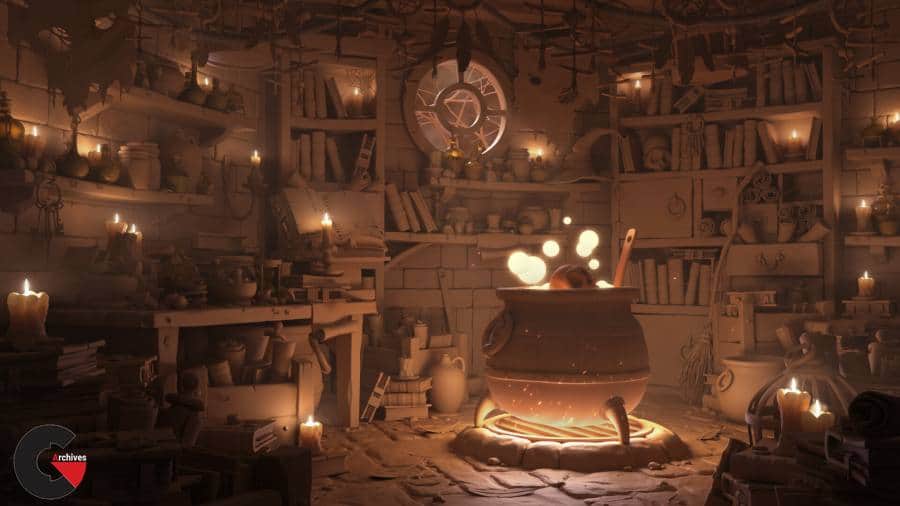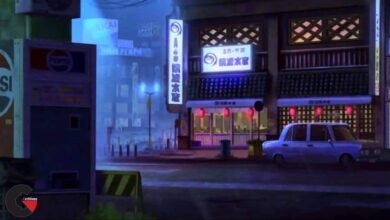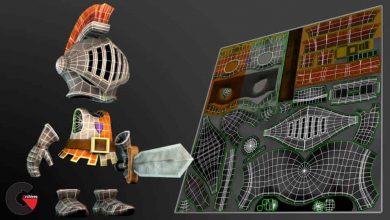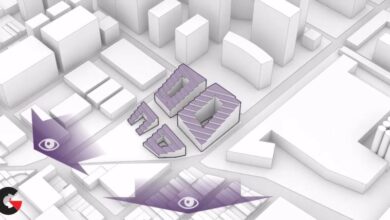Creation of 3D Scenes from Scratch in Maya
 Creation of 3D Scenes from Scratch
Creation of 3D Scenes from Scratch
Creation of 3D Scenes from Scratch in Maya : Work on a scene’s set dressing starting from the idea, to the blocking and composition, up to the final render.
Composition, color, and lighting are the keys to bringing a 3D stage to life. Through the set dressing, you can not only decorate and set a realistic environment but also provide information to the story you want to tell. Albert Valls is a 3D artist who specializes in modeling and scene creation, and his projects are defined by his passion for the small details. In this course, he teaches you how to create your own scene.
With his experience working in Framestore for high-level productions such as Avengers: Infinity War, Thor: Ragnarok, and Fantastic Beasts: The Crimes of Grindelwald, in this course he teaches you all the necessary steps to create a scene from scratch in Autodesk Maya.
Start with the idea, blocking and composing, until the final render. You will see the techniques and tools that will help you turn your imagination into reality while discovering the methodology used by professional studios.
Start the course by meeting Albert, who tells you a little bit about him, about his professional career as a 3D artist, and the different reasons why he has been successful in his career. He also shows you artistic references and his main audiovisual influences.
Albert talks to you about the most important thing before creating a scene: the idea. Learn about different sources of references and how to plan the project. See the basic concepts of composition and make the first sketch of your scene, which is fundamental before starting.
Let’s get to work! Using essential tools, block out or model in low poly to visualize and modify your scenario, adjusting the scale, volumes, and proportions.
Then, build the assets of the environment. See what the set dressing technique is and the importance of choosing the right style, level of detail, and creation of libraries to optimize your modeling work. Also, see how to reuse already modeled objects to create new ones and prepare all the assets for production.
Continue to build your scenario. Use the previously created set dressing library and learn how to interpret blocking like a professional. Add props to the scene and visualize your character to achieve a perfect dressing before the files are ready for textures.
Finally, complete your scene with the rendering, apply some basic lighting and rendering concepts with your own style and then, with Adobe Photoshop, finish your stage and leave it ready to publish in your portfolio.
What is this course’s project?
Make a 3D scene applying the teacher’s working methodology. Albert will make one set in a dungeon, but you can choose what your scene is about.
Who is it for?
3D enthusiasts with experience in modeling who want to go beyond the creation of assets and learn how to completely manage 3D scenes.
What you need
You will need knowledge of 3D modeling—ideally in Maya, but you can use other 3D software if you prefer—and you should be familiar with a drawing or illustration program.
Regarding materials, you will need a computer with Autodesk Maya (Albert will work with version 2019, but you can work with another version or software), Adobe Photoshop, or another program where you can draw digitally.
lB6MwSwNNIYYHz66UqInBRH/video%205/43633
Direct download links 4.5 GB :
Direct download link reserved for subscribers only This VIP
Dear user to download files, please subscribe to the VIP member
- To activate your special membership site, just go to this link and register and activate your own membership . >>>register and activate<<<
- You can subscribe to this link and take advantage of the many benefits of membership.
- Direct downloads links
- No ads No waiting
- Download without any limitation ، all content in website
CGArchives Is The Best
Review
Review
Review this tutorial
 Creation of 3D Scenes from Scratch
Creation of 3D Scenes from Scratch



